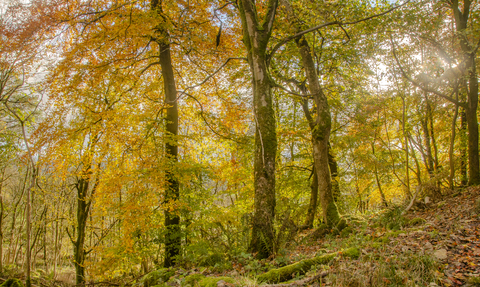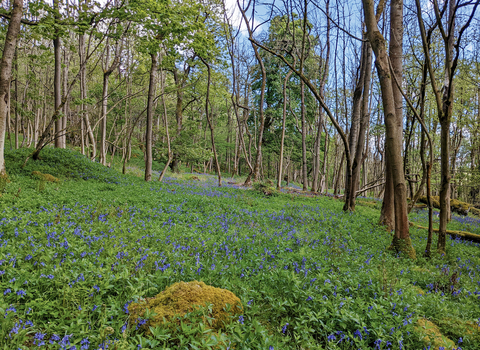
Globeflower Wood Nature Reserve
Location
Know before you go
Dogs
When to visit
Opening times
Open at all times. A 1 hour trip is all you need at this reserve to observe the spectacular view.Best time to visit
May to June- when the globeflowers are in bloom!About the reserve
The nature reserve is tiny, fragile and isolated but is well worth a look if you are in the area. This triangular reserve of ungrazed damp meadow, fringed by willows, shines golden yellow in late May and early June when the globeflowers are in bloom. Take a look over the wall to enjoy this stunning display.
The Trust took over the site in 1963 from a farmer who wanted to ensure that the globeflowers were protected. Alongside them, you can see great burnet, water avens, meadowsweet and melancholy thistle, with early purple orchids in spring.
Contact us
About
Despite its small size, Globeflower Wood is of great interest due to the concentration of globeflowers and other tall herbs. The golden yellow globeflowers create a wonderful display, blooming alongside great burnet, water avens, meadowsweet and melancoly thistle. Large sycamores are in the drier eastern corner, whilst willow scrub with some hazel, alder and birch has developed in the wet area.
The nature reserve is a triangular limestone walled enclosure largely composed of ungrazed damp meadow fringed by various small willows.
Due to its small size and dampness the reserve is a fragile site and whilst there is a stone step stile in the wall there is no public access. The globeflowers and other plants can be easily viewed by looking over the wall.
The limited management of the site is essentially to help this small area remain frozen in time, ready for the opportunity for the flowers to spread back into the surrounding area.
Seasonal highlights
- Spring: Plants - Water avens; Birds - Willow warbler
- Summer: Plants - Wood cranesbill; Melancholy thistle; Globeflower; Meadowsweet
- Autumn: Birds - Migrant hawker; Chaffinch
- Winter: Birds - Robin, Wren
History
Globeflower Wood is one of the Trust's smallest and also oldest nature reserves. The site was aquired in 1963, when the farmer who had kept this parcel of land ungrazed, because he liked the display of globeflowers, decided to sell his farm, but wanted to ensure that the flowers were protected.
Directions
Public transport
The nearest train station is at Settle, with occasional buses to Malham.
By car
From Settle take the B6479 to Langcliffe. Turn right onto New Street in Langcliffe village. Stay on this road as it becomes Henside Road. The nature reserve is about four miles from Langcliffe and a mile west of Malham Tarn.

The autumn colours were even more beautiful when the sun came out
Photo Credit - Telling our Story Volunteer, Sara



